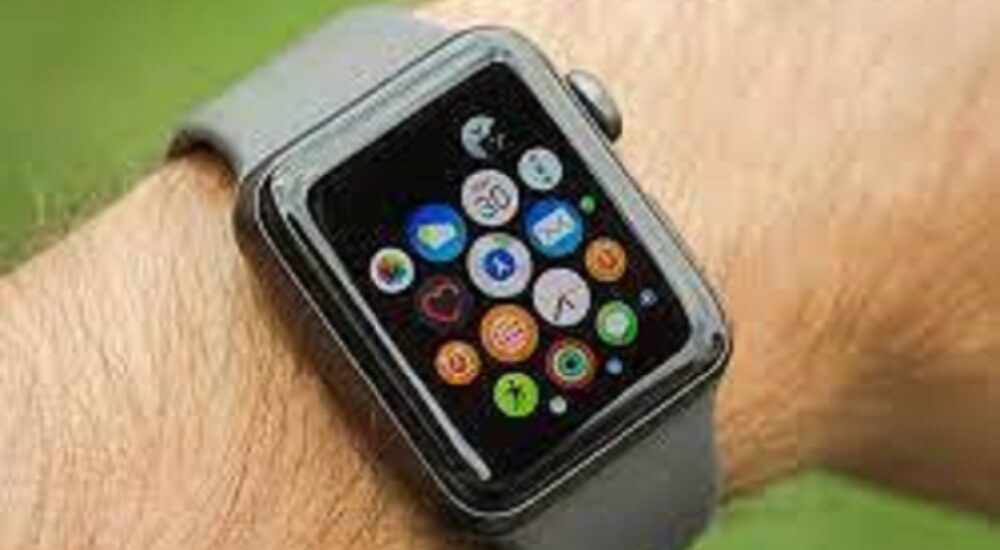If you’re wondering how to get Apple Watch VO2 max readings, you’re not alone. This valuable metric can offer crucial insights into your cardiovascular health and exercise performance. This guide will provide a step-by-step breakdown of accessing and interpreting this vital data.

Table of Contents
Understanding VO2 Max
VO2 Max, or maximal oxygen uptake, measures the maximum amount of oxygen your body can utilize during intense workouts. It’s an indicator of your cardiovascular endurance and can provide insights into how effectively your body can transport and use oxygen during exercise. A higher VO2 Max typically suggests better aerobic fitness and overall cardiovascular health.
Historically, athletes and fitness enthusiasts used this measure to optimize training and peak performance. According to the Mayo Clinic, a higher VO2 Max is generally associated with a lower risk of chronic diseases, better heart function, and overall longevity. Monitoring this metric can be invaluable, especially if you’re keen on improving your endurance and cardiovascular health.
Ensure Compatibility
Before diving into the VO2 Max feature, it’s paramount to ensure your Apple Watch is compatible. Apple introduced the VO2 Max feature in Apple Watch Series 3, but it’s become more refined and accurate in the latest iterations. Here’s how to check your device’s compatibility:
- Access the ‘Settings’ app on your Apple Watch.
- Navigate to General > About. Here, you can see the model and software version of your watch.
- Ensure you’re running watchOS 7 or later. This version introduced the ability to track VO2 Max natively without third-party apps.
If your watch isn’t compatible, consider updating the software or upgrading to a newer model to utilize this feature.
Setting Up the Health App
Accessing your VO2 Max readings requires the Health app on your paired iPhone. The Health app is a central repository for all your health metrics, and here’s how to access your VO2 Max data:
- Open the Health app on your iPhone.
- At the bottom, select the “Browse” tab.
- Use the search bar to input “VO2 Max.”
- From the results, select “Cardio Fitness” or “VO2 Max.”
- You will now be presented with a graphical representation of your readings, if available.
If you’re new to the Apple Watch ecosystem or haven’t been using the workout tracking feature, give it some time. The watch requires a few workout sessions to provide an accurate reading.
For more articles like this one click here – How To Fix Apple Watch Issues: A Comprehensive Guide
Recording a VO2 Max Reading
Obtaining an accurate VO2 Max reading isn’t instantaneous; it’s a metric calculated over time and workouts. Here’s how:
- Engage in outdoor activities like walks, runs, or hikes with your Apple Watch. These are ideal for VO2 Max calculations.
- Aim for at least 20-minute sessions. Shorter durations may not provide sufficient data for an accurate reading.
- If you have an Apple Watch model without inbuilt GPS, ensure your iPhone is in close proximity during your workouts.
- After several sessions, check the Health app for your VO2 Max data. Remember, consistency is key.
Apple provides a detailed guide on how the VO2 Max calculations are done and how to interpret them in their official Support Document.
Interpreting Your VO2 Max
Now that you have your readings, understanding them is the next step. VO2 Max is measured in milliliters of oxygen used in one minute per kilogram of body weight (ml/kg/min). Generally, higher numbers indicate better cardiovascular fitness.
There are several classifications available based on age and gender. Remember, these classifications are general and might not account for individual nuances. It’s always a good idea to consult with a fitness professional or doctor to get a personalized assessment.
Troubleshooting Issues
Occasionally, you might face issues obtaining a VO2 Max reading. Before panicking, consider the following troubleshooting steps:
- Compatibility: Ensure you’re using an Apple Watch Series 3 or later with watchOS 7 and above.
- GPS: Some workouts require GPS tracking, so ensure that it’s enabled on your watch and that you’re outdoors.
- Workout Duration: If your workouts are consistently under 20 minutes, they might not be long enough to gather accurate data. Aim for longer sessions.
Additional Tips for Optimal VO2 Max Readings
While the Apple Watch provides a convenient way to estimate your VO2 Max, there are a few things you can do to ensure the readings are as accurate as possible:
- Consistency in Workouts: Regularly tracking similar workouts (e.g., outdoor runs) over time will help the watch calibrate and refine its estimations, leading to more consistent and accurate VO2 Max values.
- Wearing the Watch Correctly: The positioning of the watch on your wrist can affect the accuracy of the heart rate sensor. Apple recommends wearing your watch snug but comfortable.
- Monitor Environmental Factors: VO2 Max can be influenced by altitude, temperature, and humidity. While the Apple Watch doesn’t directly account for these, being aware of them can help you understand any fluctuations in your readings. For example, if you typically run at sea level and then do a mountain hike, the change in altitude can affect your VO2 Max.
Importance of VO2 Max in Overall Fitness
VO2 Max is just one measure of cardiovascular health and fitness. While it’s a valuable metric, it’s essential to consider it as part of a broader spectrum of health indicators. A balanced approach to fitness should also consider strength training, flexibility exercises, and mental well-being.
Conclusion: How to Get Apple Watch VO2 Max
The VO2 Max feature on your Apple Watch is a powerful tool in understanding and improving your cardiovascular health. By following the steps outlined in this guide, you can confidently harness this metric to optimize your fitness journey. Remember, health is a journey, not a destination. Stay consistent, informed, and proactive in your pursuits.
